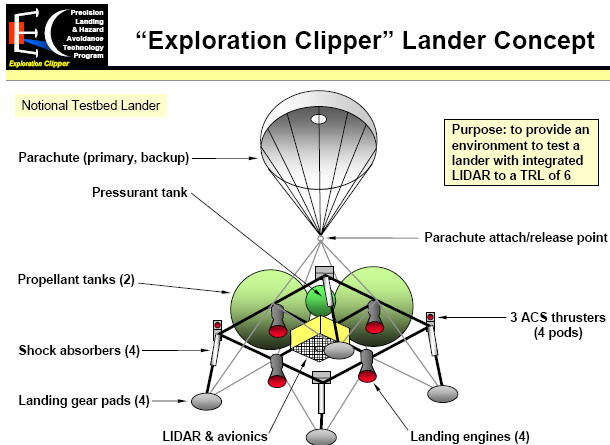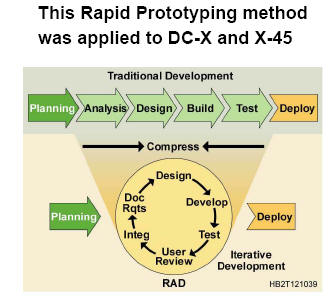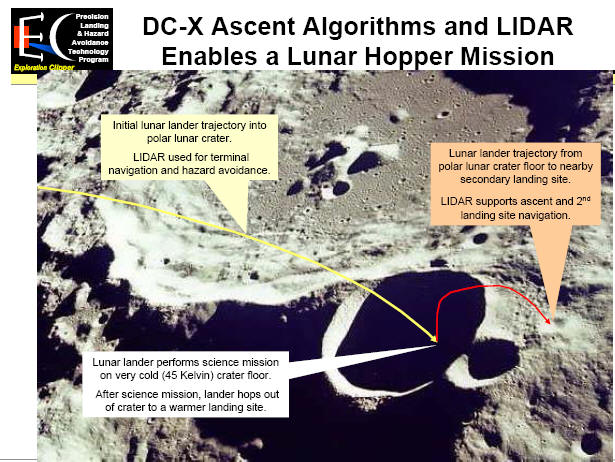Microimages.com has been helping the Peace Pipe Ranch in Texas examine their mesquite trees by using infrared aerial photography and processing that information with the use of commercial image processing software.
They are currently using Landsat overview imagery to look at three sections of the property. using the previously taken aerial photos and then comparing them with Landsat images to plan brush control treatments. In the past, color infrared film was used for mapping mesquite because near infrared energy is reflected well by chlorophyll-rich green vegetation like mesquite. July pictures were taken because there were less surrounding grasses and the mesquite could be viewed as bright red in the photos. This is in Band 3 of the electromagnetic spectrum and is designed to sense in a chlorophyll absorption region aiding in plant species differentiation. . With specialized software the Peace Pipe Ranch could create a map of all the mesquite on the property and then prioritize which areas should be sprayed based on their value for growing forage grasses. This reduced the amount of money spent on chemicals and aerial spray services each year. Their goal was to reduce mesquite and open up more of the 66,000 acres so that more grasses would grow to help feed the cattle on the ranch. Using precision aerial spraying they accomplished their goal.
Mesquite tree danger of being consumed as bio-energy to produce ethanol
The mesquite tree is a wonder tree that has been used by the Native Americans and most wildlife to sustain their existence for over 2,000 years and now it is in danger of being consumed as bio-energy to produce ethanol. According to AgNews, the determination of the feasibility of developing a bio-energy industry in rural West Central Texas using the mesquite-covered mid-section of Texas was being considered.
In the Sonoran Desert of Mexico, the mesquite tree is being harvested in order to fulfill the demand for mesquite charcoal. Since roughly 1980, mesquite wood has been used as a cooking fuel to enrich the flavor and scent of grilled foods. In the last decade, the demand and popularity of mesquite has augmented. Over 500,000 acres of mesquite have been cleared in northern Mexico in order to meet the growing demand. "the denuding of the Sonoran Desert over the past century has reduced the numbers of 36 of the 82 kinds of birds that depend on the flood-plain mesquite forest habitat." In a related article, Dr. Nabhan also states: "If both the U.S. and Mexico do not address deforestation soon, other efforts to protect endangered species in this area will be undermined." Instead of cutting the mesquite tree, dried mesquite pods can be placed on any wood or charcoal and provide the same experience and flavor without destroying the mesquite tree." Legislation has been introduced in Mexico to limit mesquite cutting.
Model: "The Use of Remote Sensing and Geographic Information Systems for Soil Erosion Hazard Mapping in Chiapas, Mexico". They use satellite images obtained through the North American Landscape Characterization (NALC) program. This project is part of the National Aeronautics and Space Administration (NASA) Landsat Pathfinder Program and has rendered public domain Landsat Multispectrai Scanner (MSS) images for most of the North American continent.
Mesquite is a Low Carb, Naturally Sweet Diet Supplement
The mesquite tree produces a sweet, yellow pod that is used in food because it is high in dietary fiber and protein including lysine. Mesquite ground pods are used as a low carb, low fat, low glycemic, and high in dietary fiber but naturally sweet diet supplement. The mesquite pods are used in flour and other cooking recipes as a source of calcium, magnesium, potassium, iron, and zinc. The ground mesquite pods are highly effective in balancing blood sugar because the digestive time for mesquite is to 4 to 6 hours unlike wheat that digests in 1 to 2 hours. These factors result in a food that maintains a constant blood sugar for a sustained time and as a result prevents hunger.
The mesquite tree is often called a "nurse" plant because of its ability to repair and protect animal and plant species from the extremities of the desert. Removal of these trees and even the thinning of their branches can kill cactuses, vines, shrubs, and desert wildflowers by exposing them to harsh sunlight and temperatures. Mesquite trees usually indicate very permeable, well drained soils having a low water table. The soils are usually nonsaline and suitable for agriculture if water is available. Airborne laser altimetry can provide rapid quantification of landscape topography, gully and stream cross sections and roughness and vegetation canopy properties for large areas.
Cutting the Mesquite Trees down causes soil erosion and will produce negative ecological effects. (The Soil Data Mart provides direct link for downloading spatial and tabular data for use in Geographic Information System.)
A large majority of animals and people use the mesquite trees as a major food source. As an example, the wolf uses the Mesquite pods as 40% of its food source. More than 200 plants and animal species depend on the mesquite tree for survival and reproduction. Not only animals and wildlife are using the Mesquite pods for food. People use the mesquite pods for food (mesquite flour, syrup, and more). The mesquite pod could be a major food source for the poor as the pods are high in sugar (16%) and protein (12%). Is it possible that mesquite trees and other plants might filter out harmful substances in our water supply (like Arsenic)? This would be especially important during the rainy season when flooding is probable. (See Ferns Remove Arsenic from Soil and Water. Note: Ferns are also being used to remove arsenic from drinking water. In a recent pilot study in Albuquerque, New Mexico, the ferns significantly decreased the level of arsenic in samples of the city's drinking water. Other plants should be tested for this ability. Scientists are genetically modifying trees to remove environmental toxins. "Current methods to rid dirt of these poisons run about $1 million per acre-foot of earth (the volume of a foot-deep acre of soil). Using plants to do the same job, on the other hand, costs about $3,000.)"
When the the mesquite tree is removed there is less oxygen in the air and there is more carbon dioxide and so the carbon cycle of the planet is changed and there is less oxygen in the air available for people. Increase of global warming? Let's look at what happens to the soil (see Water and Wind Induced Soil Erosion Assessment and Monitoring Using Remote Sensing and GIS). The mesquite tree is a natural windbreak, removing the mesquite tree means you have no wind break and soil erosion is increased drastically. There are heavy dust storms in the Southwest and without a wind break, homes, families, and animal life will be at risk for an increased wind force with less natural habitation to provide cover for their protection. Abrasive winds which carry sands in the desert can cause eroded buildings and utility poles. Drying winds also increase the moisture stress on young seedlings. There can be no prediction that the mesquite tree would be able to grow back successfully if removed from the desert as changing ecological factors often deny some species their existence. Dr. Gary Nabhan, the director of the organization Native Seeds/SEARCH, noted in The Phoenix Gazette that "the denuding of the Sonoran Desert over the past century has reduced the numbers of 36 of the 82 kinds of birds that depend on the flood-plain mesquite forest habitat."
The removal of trees not only is ecologically destructive, but the wild growth removal disturbs the environment by producing more traffic and noise to an area that previously was considered shelter for animal wildlife. The mesquite trees are also a noise barrier, against the sounds of civilization. Animals are protected because they are out of sight of civilization, if you remove this barrier, animals will be lose their shelter and probably be killed in the process of destroying the trees.
It is said that the mesquite tree can be cut and then it grows back quickly because it is a strong, hearty plant, but the environment can change (and is changing... there is a 2 degree increase in global warming) and therefore to cut a tree and say it will grow back is taking a chance. Just because in the past a tree grows back does not always mean in the future it will grow back. As an example, the population of the mesquite tree is done by animals consuming the mesquite seeds and then leaving their droppings on the soil, and from there the mesquite tree naturally grows. If you remove the trees, the animals will not be able to consume the seeds, indeed the animals will not have a place to eat or take shelter. Although mesquite is considered a resilient plant, it can take up to 50 years to grow back, depending upon the water, soil and climate conditions. Establishing plants on arid sites is very challenging as new plants need more water to establish themselves. The desert has little water, there can be high winds, abrasion from blowing sand, and little protection from herbivores as established seedlings are often the most succulent plants available to be eaten. Animals such as rabbits, rodents, domestic livestock and insects can prove fatal to young plants unless adequate protection is provided. Mesquite trees were previously thought to have no natural enemies, but that too is a falsehood. Right now a deadly desert mistletoe is carried by the winds onto mesquite trees from Pahrump, NV to Tuscon, AZ and the trees are dying.
If we don't take care of our environment, we will have no air, no animals, no people, and a lot of natural erosion and destructive forces that only make life worse.
Let's look at the myths and facts.
Myth: Mesquite trees horde water (False)
It has been proven that like all trees Mesquite trees take in so much water to survive but if the trees are removed from the land the water that was consumed by the trees is not going back into the ground to be saved... but will instead be consumed by natural grasses and evaporative air moisture instead.
Fact 1: The Mesquite tree exchanges carbon dioxide to provide oxygen and clean air. The mesquite tree cleans the air of impurities and like all trees, they provide oxygen for the atmosphere (slows global warming). The Mesquite tree slows erosion and is a natural windbreak. There is talk of harvesting 2 million acres of mesquite trees. The talk of leaving 2/3 of the mesquite tree in tack for wildlife habitat). What happens when you cut over 660,000 trees and disturb the environment when you do it? The wildlife that was disturbed will not be able to live in the area and the trees will have a hard time growing back without the animals consuming the seed and providing the spreading of the seed in their droppings.
Fact 2: The Mesquite tree provides food for people, animals, life stock and birds. There are trees that only provide oxygen but the mesquite trees provides actual food for people and animals. Are we so rich in the U.S. that we can kill a tree that provides food? We have people starving in the U.S. that could greatly benefit from the Mesquite pod as a food source.
Fact 3: The Mesquite pod can be saved for a long period of time and can be made into flour. There are hundreds of acres of land that produce mesquite pods every year that are going to waste that could be providing food for the poor.
Benefits
Trees store carbon and clean the atmosphere. In 50 years, one tree generates $30,000 in oxygen, recycles $35,000 of water, and removes $60,000 of air pollution. **
Mesquite is a legume that fixes nitrogen in the soil, creating natural fertilizer for use by other plants
The seed pods are an important source of food for insects, livestock, deer, birds and small mammals.
Mesquite Trees prevent or reduce soil erosion. (See REMOTE SENSING and SOILS) **
Mesquite Trees prevent or reduce water pollution.
Mesquite Trees recharge groundwater and sustain stream flow.
Crop yields of fields with windbreaks are significantly higher than those without windbreaks.
Living snow fences, strategically placed, hold snow away from roads, reducing maintenance costs
As a landscape tree, it is tolerant of drought, insects and heat. Absorbs dust and heat. and reduces glare.
Mesquite Trees add oxygen to the air and reduce carbon dioxide.
Mesquite Trees reduce soil, water and air pollution.
Native Americans used the seeds for bread and alcohol. A black dye or cement for pottery can be generated from mesquite, and the gum from the bark was eaten as candy or dissolved in water for dysentery, wound or scratchy throat treatment.
Mesquite beans store well, maintaining excellent viability for years or even decades. There are about 30,000 seeds per kilogram.
In addition, it has recently been discovered that the seeds of the mesquite tree are effective in controlling the blood sugar levels of diabetics.
The Mesquite tree is a wonder tree because it uses little water, and provides food for people and animals. There are all kinds of cures and remedies that we are finding that are connected with this tree. We have yet to explore the healing energies of the plants around us. Perhaps we should take care of the gifts nature has given us, instead of destroying what we have for monetary gain.
Alternative Energy Related Articles
The remote sensing technique of using a laser to examine things at a distance is generally referred to as lidar, which stands for "light detection and ranging."
Boeing was awarded a NASA Human and Robotic Technology Development contract in 2004 called the Precision Landing and Hazard Avoidance Technology Demonstration. The program is to help NASA to develop the critical technologies needed to return to the moon and one day to Mars called the Vision for Space Exploration. As part of this four-year demonstration with a first year value of $3.1 million, engineers at Huntington Beach, Calif. are to integrate Light Detection and Ranging (Lidar) terrain mapping and safe site selection software and hardware with flight proven guidance and control to provide autonomous navigation and hazard avoidance during landing. Boeing is scheduled to develop the hardware and software that will build a prototype lander for testing, culminating in a drop test over hazardous terrain.

In order to demonstrate Adaptive Software Architecture that is applicable to different Lunar and Mars lander concepts with technology that includes a LIDAR sensor, site algorithms, guidance navigation and control integrated, fault tolerant implementation, a rapid prototyping method is being used.

NASA Human and Robotic Technology Development is strategically linked to Project Constellation Spirals one and two, which are efforts to return humans to the moon by 2020.

A sister technology, laser radar, or ladar, uses a laser like a radar to locate an object. Lidar, however, refers to the more general case of using a laser to derive additional properties of an object such as density or chemical composition.
Mars rover takes its first spin on the red planet
In a major milestone, the six-wheel Curiosity Mars rover took its first baby steps Wednesday, rolling about 15 feet forward, performing a slow 120-degree pirouette and then backing up eight feet to prove the $2.5 billion science lab is, in fact, mobile and ready to rove.
FULL STORY
This website uses cookies that are necessary to its functioning and required to achieve the purposes illustrated in the privacy policy. By accepting this OR scrolling this page OR continuing to browse, you agree to our Privacy Policy